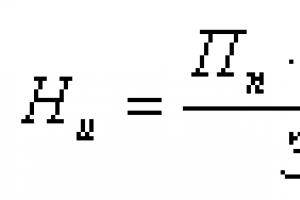After the harvest has already been harvested and the jars of pickles have been rolled up, it’s time to take care of preparing the soil in the fall. This is necessary so that next year you can plant the plants in soft, moisture-saturated soil. Also, the range of soil cultivation work will help to avoid the occurrence of pests.
Stages of greenhouse treatment
- First of all, it is necessary to collect all the remains of plants that remain in the ground.
- Among other things, you will have to collect the larvae. Some of them will die during digging, while others will not, so this stage of work is mandatory. Don't forget about sifting the soil.
- What to do when the larvae are collected? Clean dirt from the walls and floor of the greenhouse.
- The next stage is carrying out.
- After disinfection, the greenhouse is ventilated, and the walls of the building will need to be thoroughly washed.
- Then they dig up the soil and fertilize it with manure, peat and humus at the rate of half a bucket per 1 square meter.
- Next, a mixture of sand and ash is placed on top of the fertilizer; you can also put straw.

Treatment of walls and frame
The film coating is washed before dismantling. Soap solutions are used as cleaning agents. Disinfection can be carried out using. After the film has dried, it is carefully folded and stored in a warm room.
How to process the frame? For these purposes, use a solution of bleach - about 400 grams of lime per 1 liter of water.
Important! The solution should sit for 4 hours. The mixture's residue is an excellent treatment for frames and garden tools. The tool for applying lime is a brush.
Strengthening the frame

What to do? Strengthen the product with special supports. You can also use special arches or create supports in the shape of the letter “T”. The required number of supports is calculated as follows: for a greenhouse of 6 meters you will need 3 pieces. If there is a threat of accumulation of a large amount of snow, it is better to double the number of supports. Another important point: when installing strengthening parts in the fall (so that they do not fall through), pieces of wood are placed at the bottom of the greenhouse, which will act as a support. At the top of the greenhouse, supports are attached to the crossbar.


Preparing a greenhouse for winter (video)
Soil protection and fertilization
It has already been noted that in order to fertilize the soil correctly, it is necessary to use humus, manure and peat. Next, sand and ash are added, and straw is placed on top.
Important! Fertilizer used in the fall must be of high quality.
After the first snow falls, fertilizer is applied to the greenhouse and generously sprinkled on the soil in a layer equal to 20 cm. This way you will not only protect the soil from freezing, but also protect it from moisture in the spring.
Disinfection: types
Disinfection is necessary to prevent pests from infesting the greenhouse. The work is carried out in September, and the air temperature should not exceed +8 degrees. Disinfection can be:
- wet;
- gas.
If you are planning to carry out gas disinfection in the fall, you should take care that the greenhouse is well sealed. The process involves fumigation with sulfur. In this case, 80 grams of sulfur will be needed per 1 cubic meter of greenhouse. If the greenhouse is damaged, the dosage increases - 150 grams.

Before treating the greenhouse with sulfur, pay attention to whether there are any cracks in it. If there are, they will have to be covered up. The combustion of sulfur occurs on baking sheets that are filled with burning coals.
The baking sheets are placed in different parts of the greenhouse. The doors to the building are closed tightly. To get the effect, you will have to wait three days, then the greenhouse is ventilated. It is necessary to wear a gas mask when burning sulfur.
Proper disinfection in a glazed greenhouse can only be carried out by spraying. For this, a bleach solution is used. Formalin (40%) can also be used for wet disinfection. It is worth remembering that this operation is toxic, which means that it will also have to be carried out in a gas mask.
Growing vegetables in a greenhouse requires a special approach, since crops grow there in a limited space. This leads to soil depletion, so it is important to add nutrients to greenhouse beds annually. Otherwise, it will no longer be possible to get a good harvest from the greenhouse. No less important is fertilizing the soil in the greenhouse in the fall, when preparing it for wintering.
However, before you start fertilizing, you need to treat it to destroy various fungi and infections.
Preventive measures in the greenhouse

First of all, you should collect all plant debris from the beds, take them out and burn them, and wash the structure itself thoroughly. The same applies to garden tools (rakes, hoes, shovels); they also need to be taken out, cleaned of soil and washed with laundry soap.
When the greenhouse is cleaned, it is necessary to disinfect the beds themselves. To do this, you can use one of the following methods:
- Pour boiling water over the soil and cover them with a thick film for a day. Repeat the procedure two more times. All three treatments should be done within one week.
- Sprinkle bleach (100 g per 1 sq.m.), pour in a solution of potassium permanganate and dig up.
- Add Fitosporin or Trichodermin to the soil. Plant (mustard grows the fastest).
Preparatory work in the greenhouse must begin before the air temperature drops below 10 degrees Celsius.
Autumn feeding of greenhouse beds

After preventive measures, it’s time to directly fertilize the soil in the greenhouse:
- scatter wood ash over the beds (at least 50 g per square, with increased soil acidity up to 200 g);
- spill the soil with a solution based on superphosphate (20 g per bucket of water);
- sprinkle potassium sulfate at the rate of 15 g of granules per square;
- spread rotted compost, manure or bird droppings over the beds;
- dig up.
Instead of individual mineral components, complex preparations, for example, nitrophoska, can be used in the greenhouse in the fall. In dry form, it is applied at 50 g per square; to prepare a solution, which is then used to spill the beds, you need to take half as much per 10 liters of water.
Cleaning and fertilizing greenhouse beds before winter - video
The presence of a greenhouse on the site does not always mean fresh vegetables and a rich harvest. Abundant fruiting one or two seasons after installation is usually replaced by intense struggle with all kinds of pests and diseases. And the use of chemical insecticides during the growing season negatively affects the usefulness of the fruit.
This article will provide information on how to improve the soil in a greenhouse and raise fruiting to a higher level? Methods of exposure and preparations for disinfection and feeding. How to prepare the soil in a greenhouse for winter using chemical and natural methods?





Preliminary preparation
Before preparing the soil in the greenhouse in the fall, it is necessary to carry out general cleaning, remove all remnants of plants and auxiliary materials (garter ropes and wooden pegs). The resulting garbage is a highly contaminated mass, so it is recommended to burn it rather than throw it into the compost heap.
Before disinfecting the soil in the greenhouse, it is necessary to disinfect the entire structure. Many of the pests hide in the cracks between the frame and glass or polycarbonate. It is these places that you should pay special attention to. The most effective preparations for disinfecting a greenhouse are a solution of potassium permanganate or copper sulfate. The concentration of both substances is taken approximately, but not less than 1 tablespoon per bucket of water for vitriol and 1 teaspoon for potassium permanganate. Particular attention should be paid to green mold that has formed on the bottom of the window material; it is best to scrape it off completely. The resulting solutions must be used to treat the frame and glass of the greenhouse. A solution of lime chloride is used to treat wooden structures.
Soil treatment
After cleaning, you can begin preparing the soil in the greenhouse for winter. This process can be divided into two parts: disinfection and soil fertilization. There are several ways to disinfect the soil:
- Chemical;
- Thermal;
- Biological.
In case of significant infestations by various pests, the simultaneous, combined use of several methods is practiced. Before disinfecting the soil in the greenhouse in the fall, it is necessary to determine the next crop that will be planted next spring for compatibility with the pesticides used. Some of them can inhibit the growth of cultivated plants or accumulate in food and, accordingly, enter the human body.
Chemical methods of disinfection
There are quite a few pests and diseases that can destroy standing crops. To effectively combat the most dangerous of them, special preparations have been developed. Which can be purchased at agricultural chemical and seed stores. However, most of them are used after the plants have been infected. To prevent the appearance of pests, preventive treatment of the soil in the greenhouse is carried out in the fall. It consists of watering the soil with a solution of formaldehyde or bleach. You can also fumigate the room with special sulfur or tobacco bombs. For greater effect, the room is sealed and intensively ventilated after 2-3 days.
Such methods are effective when cultivating soil in a greenhouse infected with late blight (late blight), spider mites, greenhouse whiteflies, various varieties of aphids, root and brown rot and some other less common diseases and pests. If the number of pests is insignificant, then treatment of the soil in the greenhouse with copper sulfate is carried out by spraying the surface with further digging of the top layer.
Thermal treatment methods
Temperature treatment of the soil in a polycarbonate greenhouse in the fall can be carried out in different ways. The simplest is to steam the soil with boiling water. Cool boiling water at the rate of 10 - 15 liters per 1 m2 is evenly distributed over the ground and then covered with film for several hours. Another fairly simple method is to calcinate the top layer of the earth using infrared lamps, which are often used in greenhouses as a heating system.

Steaming over a fire is used if it is necessary to disinfect a small amount of soil
A more labor-intensive and expensive method is internal ground calcination with hot steam. However, installing such a system will allow it to be used as an alternative earth heating system and significantly increase the growing season of plants. To apply this method, it is necessary to bury PVC pipes with a diameter of 60-80 mm in the soil of the greenhouse to a depth of 30-40 cm (from the top edge of the pipe to the surface of the ground).

Ground heating installation can be used for thermal disinfection
Holes are cut in the pipe along the entire length, through which during operation hot steam will escape, pumped by a heated vessel with water. It is better not to combine this type of treatment with ground electric heating, as short circuits are possible.
If the greenhouse is small and the amount of soil is small, then they practice calcining the soil on baking sheets placed over fires or laying them out directly on the cultivated land. This procedure can only be carried out if the stationary foundation of the greenhouse is high enough, and the material of the enclosing structures is glass and not polycarbonate.
Biological means of disinfection and recovery
Recently practiced by supporters of natural farming. The essence of this method is intensive crop rotation of fruit-bearing crops with green manure plants. This method is especially effective if the greenhouse has a heating system that can increase the growing season of plants in the fall from several weeks to 1.5-2 months. The advantages of planting green manure plants in the fall are obvious:
- Young plants provide more nitrogen that enters the ground while simultaneously “pulling” potassium salts to the surface with their root system;
- They do not need to be dug up, it is enough that in case of serious frosts they will die, forming a layer of humus on the surface, protecting the soil from being washed out in the fall and from sunburn in the spring;
Is it necessary to dig up the soil in the greenhouse in the fall after planting green manure? The land does not need reclamation; the dead root system not only fed it, but also became additional drainage.

Here's how to fertilize the soil in a greenhouse in the fall - mustard green manure plant is sown mainly before cucumbers
The following crops are widely used as green manure plants:
- Cereals – oats, rye, barley, wheat;
- Legumes – peas, lupine, phacelia, vetch;
- Cruciferous vegetables are also difficult - sunflower, radish, mustard.
Of all the listed plants, special attention should be paid to early-ripening and cold-resistant varieties: fodder peas, mustard, oats, vetch, rapeseed. They are the ones that are preferable to use as soil preparation for a greenhouse. The optimal growing season of 5-8 weeks is sufficient for the plants to gain maximum useful mass.
Using EM
EM - effective microorganisms. The use of EM when preparing soil in a greenhouse in the fall is mandatory after thermal disinfection of the soil. There are such preparations on sale as “Baikal”, “Vozrozhdenie”, “Shine”, they consist of beneficial soil microorganisms. Before cultivating the soil in the greenhouse in the fall with EAT preparations, it is necessary to add a sufficient amount of humus. Active reproduction begins at a temperature of 10-15 C. If the autumn is warm enough, then by spring the greenhouse will have completely restored soil.
Soil replacement
Replacing soil in a greenhouse in the fall is one of the radical and most effective ways to increase productivity. Replace them if the infestation is too strong and is caused by several pests at once. In this case, it is necessary to select soil to a depth of 10-15 cm. This will result in a fairly large volume of contaminated soil. Where to put the land if there is not enough space on the site for disposal? You can not only disinfect it, but also use it for exchange after a year. To do this, the resulting soil is placed in a pile of arbitrary width, in layers 20 cm thick. Each layer is sprinkled with quicklime at the rate of 100 - 150 g. per sq. m.

Using peat as a basis for new soil in a greenhouse
The composition of the soil that must be laid to replace the withdrawn soil in a ratio of 6.5:1:1:
- Peat – sphagnum, without fertilizers, crumbly;
- The soil is fine-grained sandy loam or light loam with added humus;
- Compost - can be replaced with chicken manure at the rate of 5 kg per 1 cubic meter.
There are natural, biological additives that are highly recommended to be used in the soil, instead of inorganic fertilizers, at least in the first 2 years of use:
Summing up
Before deciding what to do with the soil in the greenhouse in the fall, you need to decide on the composition of the soil, acidity, and amount of salts. It is these indicators that determine how much and what kind of fertilizer needs to be added when compiling a soil mixture for the greenhouse.
Autumn work in the greenhouse is very important, since it would be very correct to take care of the dacha assistant, which constantly gives us the opportunity to grow a high-quality harvest. Caring for a greenhouse in the fall is an important stage in preparing a summer cottage for winter.
Proper preparation of the greenhouse and careful care will provide it with many years of life, which means that a greenhouse once purchased or built with your own hands will serve you for a very long time. In addition, by promptly caring for the greenhouse and properly preparing it for wintering, you can ensure the safety of future plants and keep the soil in the greenhouse healthy and fertile.

Cleaning the greenhouse in the fall
After the harvest is harvested, the greenhouse must be thoroughly cleaned so that nothing unnecessary remains in it - roots, crumbled seeds, wilted or dry stems, and so on.
All plant debris must be removed from the greenhouse and burned. After this, carefully remove 5-7 cm of soil, since most harmful plants are located in this layer.
The greenhouse also requires collecting larvae in the fall. This is unpleasant, but necessary. Try to develop the soil and be careful when collecting larvae, because next year they can seriously damage the harvest.
By digging up the soil in a greenhouse, you will not be able to detect and destroy all the larvae, but there is a more effective way that will help clear the soil of pests - sifting the soil.
Autumn disinfection of the greenhouse
It is very important to take care of the health of the soil, which can be seriously contaminated. During the entire warm period, we constantly create a comfortable climate (the warmth of the greenhouse and watering creates comfortable conditions) for the reproduction of various microorganisms, and even though we destroy some of them in time, many still remain in the greenhouse. It is necessary to combat infections and various pests in the greenhouse correctly so that next year you can start growing crops in absolutely healthy soil.
First of all, the layer of soil must be replaced, the rest of the soil must be sifted, and only then the next steps must be taken.
If you remove a layer of soil from the greenhouse, then you cannot replace it with soil from the garden or vegetable garden, or from under other plants.
Next, you need to thoroughly clean the racks, greenhouse frame, film or other covering from dust, dirt, and so on. Afterwards, the greenhouse premises and the greenhouse structure should be fumigated. For this you can use sulfur bombs or sulfur itself, 70-80 g for each square meter of the greenhouse. Having spread sulfur or checkers evenly throughout the greenhouse, generously spray the structures with water to increase toxicity, and ignite the sulfur. Afterwards, close the greenhouse, but be sure to watch the process.
When fumigating a greenhouse, be sure to use a gas mask and protective gloves.
After fumigation, disinfection of the greenhouse should be completed with the next step - ventilation and additional processing. Open the doors and windows wider to flush toxic gases out of the greenhouse after several hours of fumigation. Wash glass or plastic surfaces and the greenhouse structure thoroughly. This can be done using a pemoxol solution (1-2%) and nylon brushes. After such washing, it is necessary to rinse all surfaces with clean water, preferably from a hose.
Fertilizer and soil protection
Next, we return to the soil in the greenhouse. It must be properly fertilized using peat, humus, and manure, at the rate of half a bucket for each square of the greenhouse. Then, sprinkle the soil in the greenhouse with ash and sand, about a liter per square, and cover the soil with straw.

When the first snow falls, you need to bring it into the greenhouse and generously cover the soil with it, making a layer of 15-20 cm (but more can be done if enough snow has fallen). In this way, you can provide additional protection for the soil from freezing, as well as spring replenishment of the soil with moisture when the snow begins to melt in the spring.

Cleaning and treatment of the greenhouse structure
A greenhouse in the fall requires not only soil care, but also special measures in relation to the frame. It must be thoroughly washed and dried, but do not forget to cover it.
First of all, you will need to thoroughly wash the glass or film covering. The film covering is washed on the frame, rinsed, dried and rolled up. Glass is washed as standard, with a frame.

If we talk only about the frame, then it must be treated with bleach. Mix 400 g of bleach in 10 liters of water, leave for 3-4 hours and stir occasionally. The liquid is excellent for spraying the soil, and the resulting grounds at the bottom of the bucket are suitable for coating the greenhouse frame.
Having prepared bleach for the autumn treatment of the greenhouse, ensure proper care for gardening tools, which can also be soaked in this solution.
If the greenhouse is made of wood, then in the autumn it is treated with freshly slaked lime, adding copper sulfate to it. The processing of greenhouse containers - glasses, boxes and other items for use - is done with boiling water. It is advisable to do this immediately after harvesting.

In addition, the metal parts of the greenhouse can be treated with kerosene before winter, and the wooden parts can be tinted.
Strengthening the greenhouse frame
Strengthening the greenhouse frame is very important even if the winter in your region has little snow and is not very severe. The thing is that only some greenhouses can withstand a lot of weight, but the majority of greenhouses can withstand an average of 200-400 g/m2, then the weight begins to put pressure on the frame, it bends, and the greenhouse collapses.
The amount of snow in different winters is very different, especially if you take into account some regions. Therefore, the frame of the greenhouse must be strengthened so that it can easily withstand 30-50 cm of snow. This is necessary if the greenhouse is located on a suburban area and you do not have the opportunity to remove snow from its roof.

To strengthen the frame of the greenhouse, supports are used, which will take on a certain part of the weight, preventing the frame from bending or breaking due to excessive pressure from above. Supports should be installed under the main frame, as well as its joists. Do not allow any part of the frame of one and a half meters or more to be left without special support.
The support is installed under the frame and secured to it so that, due to pressure, it does not jump out and pierce the greenhouse cover if the frame suddenly drops under the weight. The lower part of the support rests on the ground, and you can also install a stone or brick under it.
If the greenhouse cover is removed, it is not necessary to install supports.
Preparing the greenhouse for autumn, special work, processing the frame and soil are very important processes that can not only extend the life of the greenhouse, but also help in growing quality crops every year.
To obtain a high yield, you need good soil, rich in microelements beneficial for plants. This is rare in nature; usually the soil in its natural form is not fertile. It is necessary to create favorable conditions for a good harvest artificially by adding various fertilizers to the soil. It is especially important to fertilize the soil in the greenhouse. Why? Greenhouse soil has its own characteristics: it is often watered and is practically sterile. Water removes everything useful from the soil, but nothing is formed in it. There is nothing to rot there, because there are no weeds or living organisms.
What should be the composition of fertile soil:
- turf soil,
- deciduous soil,
- ash,
- sand,
- organic additives,
- inorganic additives,
- compost,
- a layer of soil from a greenhouse after two years of operation.
Something about organics
This is a natural product that is full of natural nutrients. This method of soil enrichment helps to actively increase its fertility. It becomes loose, retains heat and moisture perfectly, and is enriched with carbon dioxide. Here are the main types of organic matter:
- manure,
- bird droppings,
- humus,
- peat,
- compost.
Manure
The most common type of natural supplement. The amount of useful components in it is quite high. Manure is rich in, for example, phosphorus, nitrogen, calcium, potassium. Once it gets into the soil layer, it begins to decompose, and carbon dioxide is formed. This loosens the soil, and crops receive more air. In addition, manured greenhouse soil better absorbs complex nutrients.
It is advisable to apply manure in spring and autumn. Fresh is used as a liquid feed for vegetable plants (a liter of manure per ten liters of water). You can also fertilize the beds with fresh manure in the autumn, when digging is underway. The rotted ones can also be used to enrich the soil in the spring.
Bird droppings
This waste product of birds is introduced with caution. Micronutrients (potassium, calcium, nitrogen, phosphorus, magnesium) are contained in large doses. In order not to harm the plants, it is better to use bird droppings in diluted form. The solution is prepared as follows: 10 liters of water plus approximately 0.5 liters of litter. The water should be warm.
The prepared mixture is infused for about a week, stirring from time to time. It is used for watering (one plant requires up to two liters of solution). We must remember: you cannot insist on fertilizing for a long time, because the nitrogen will begin to evaporate.
Humus
This is the result of rotting various wastes of plant and animal origin. Humus can be called the same manure or bird droppings that have been subjected to long-term decomposition (more than two years). In appearance, it is black, homogeneous soil, in which there are no longer visible plant remains. Humus is considered an ideal fertilizer for any plants; it will suit even the most delicate and capricious greenhouse crops.

It is most often used when creating mixed composts for the soil. It is used when sowing seedlings. Humus is needed in the soil to accelerate biological processes that increase the amount of micronutrients. This type of organic matter can improve the physical structure of the earth, making it loose and porous.
How to improve productivity?We are constantly receiving letters in which amateur gardeners are worried that due to the cold summer this year there will be a poor harvest of potatoes, tomatoes, cucumbers, and other vegetables. Last year we published TIPS on this matter. But unfortunately, many did not listen, but some still applied. Here is a report from our reader, we would like to recommend plant growth biostimulants that will help increase the yield by up to 50-70%.
Read...
Peat

This organic fertilizer has several subtypes, depending on its properties and origin:
- horseman,
- transition,
- lowland
High-moor peat is light in color and contains visible particles of undecomposed organic matter. Lowland is distinguished by its black color, uniformity, and the organic waste in it is completely decomposed. In the transitional one the first two subspecies are mixed.
Peat itself is not beneficial for greenhouse soil because it is highly acidic. But it is often used in composts. For example, peat manure compost consists of the following layers: peat on the bottom, then manure and peat on top again.
Peat compost must be prepared in the summer. Next spring you can use it when you dig up the greenhouse beds.
Compost
Compost is a name given to various mixtures of organic fertilizers. Mineral additives are also added here, as well as ash or lime. To make such a mixture, all the components are dumped in one place, water or liquid manure is added on top, mixed well and stacked in piles about two meters high.
Compost is prepared in the summer. It must be stirred several times during the summer and also ensure that it does not dry out, adding water as needed.
In winter, the compost heap must be protected from frost. To do this, a protective barrier is created around it: dry straw, a peat layer, fallen dry leaves, and sawdust is also suitable.
It takes about a year or a little more for the compost mixture to become ready. How do you know when the mixture is ready? In appearance, it should be black, soft and uniform, without large lumps or plant debris.

To increase the looseness of greenhouse soil, composts with wood waste are used: sawdust, shavings, wood chips and bark. All these elements must be mixed with inorganic fertilizers (urea, superphosphate) and placed in a heap. After a few months, you can already add compost.
Inorganic fertilizers (containing minerals)
To obtain a rich harvest, it is necessary to use organic and inorganic additives together. It is important to consider the dosage here. If you do everything correctly, your harvest will increase significantly.
Mineral fertilizers can be divided into the following:
- single-component (they contain one component),
- compound (they contain several useful microelements).
Simple ones include:
- phosphorus,
- nitrogen,
- potassium
Phosphorus fertilizers
Superphosphate (simple, granular, double)
It is a gray powdery substance that smells like phosphoric acid. It is taken to enrich the soil in the process of digging beds. Good to use as a liquid root feed.
Phosphorite flour
It differs from superphosphate in content: there is less phosphorus.
Potash fertilizers
Potassium sulfate
In appearance it is a white powder of whitish crystals. Let's quickly dissolve with water. The chlorine content in it is minimal. Add to the ground by digging up the beds in the autumn or spring.
Can be used as dry feeding.
Potassium chloride
It has a high potassium content (more than 50%). It can dissolve in water, but has the ability to oxidize soil. It is better to lay it after liming if the soil is acidic.
Added to the soil in the autumn due to the presence of chlorine. In winter, it is washed out of the soil, and potassium is absorbed and stored in it in a state that is convenient for absorption by plants.
Potassium salt
This is a very effective additive, suitable for feeding any vegetable seedlings.
The properties and composition of the salt are similar to potassium chloride.
Nitrogen fertilizers for greenhouses
Ammonium nitrate (also called ammonium nitrate)
The substance is in the form of white large granules, high solubility in water, used for feeding plant roots (both liquid and dry).
Urea (otherwise known as urea)
Substance in the form of crystals or granules. Good water solubility, high nitrogen content. Used to nourish the roots of various vegetables. Liquid urea can be sprayed on vegetables, for example, to combat powdery mildew.
Saltpeter (containing sodium and potassium)

Complex mineral supplements
- wood ash,
- potassium nitrate,
- nitroammophoska,
- carbonate nitrophoska,
- microfertilizers.
It contains many important elements, such as iron, silicon, potassium, sulfur, calcium, phosphorus and others. Ash is ideal for treating acidic soil. Add to the soil during off-season periods. It has a beneficial effect on the soil for a long time (more than two years).

Potassium nitrate
Contains nitrogen and potassium. It looks like a powder of yellow-gray crystals. Suitable for acidic soil, applicable for all types of vegetables. Well suited for liquid feeding of roots.
Nitroammofoska
Potassium and nitrogen supplements are contained here in equal parts. Powder in granules, it is convenient to make an aqueous solution from it. Can be added to different types of soil and for any seedlings. It is applied when feeding plants or when digging the soil.
Carbonate nitrophoska
Contains the same elements, but potassium in a small dose. It looks like granular powder. The soil is enriched with this fertilizer before sowing vegetables. Can be used in liquid form to feed roots.
Secrets of growing vegetables in heated greenhouses
Microfertilizers
Such soil mixtures contain: components with zinc, boron, molybdenum, manganese, copper. They are needed for seedlings in small quantities, but their shortage significantly affects the yield. Be sure to use microfertilizers. They are usually combined with inorganic elements, as well as ash components or peat.
It is necessary to use each type of additive, both organic and mineral, depending on the variety of crops that you are going to plant in the greenhouse. Of course, it is worth taking into account the characteristics of the soil. Try everything experimentally, gradually choosing exactly the composition of fertilizers that is specifically suitable for plants.
And a little about the author’s secrets
Have you ever experienced unbearable joint pain? And you know firsthand what it is:
- inability to move easily and comfortably;
- discomfort when going up and down stairs;
- unpleasant crunching, clicking not of your own accord;
- pain during or after exercise;
- inflammation in the joints and swelling;
- causeless and sometimes unbearable aching pain in the joints...
Now answer the question: are you satisfied with this? Can such pain be tolerated? How much money have you already wasted on ineffective treatment? That's right - it's time to end this! Do you agree? That is why we decided to publish an exclusive interview with Oleg Gazmanov, in which he revealed the secrets of getting rid of joint pain, arthritis and arthrosis.
Attention, TODAY only!








